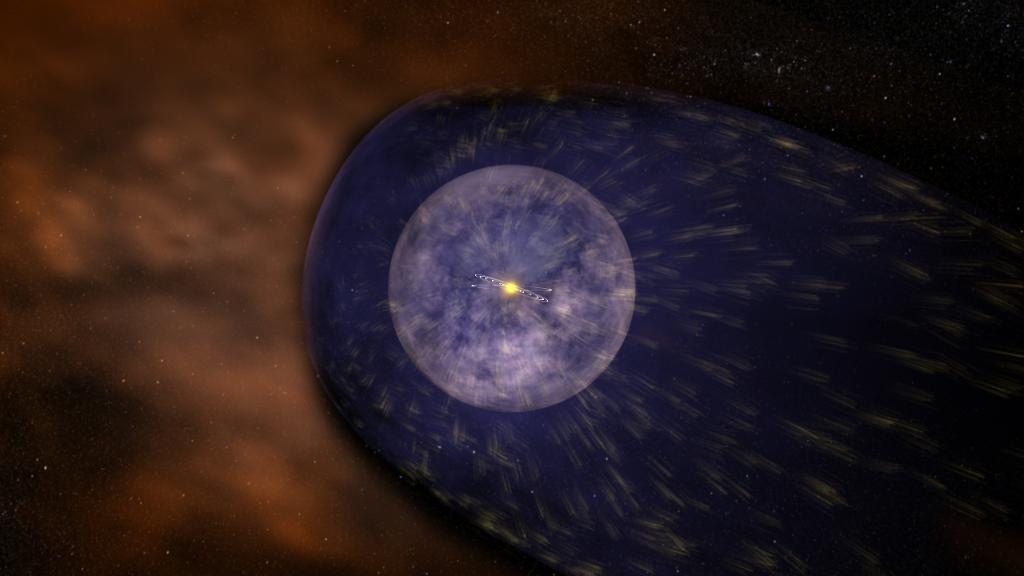The Space Research Center will participate in a NASA’s heliophysics mission
Science team from the Space Research Center of the Polish Academy of Sciences will design and build an instrument for NASA’s mission, the Interstellar Mapping and Acceleration Probe (IMAP). The PAS Center and the Ministry of Education and Science of the Republic of Poland signed the agreement on this matter on January 13th.

NASA’s IMAP will help us better understand the nature of interplanetary space, which is dominated by a constant flow of particles from the Sun called the solar wind. Credits: NASA.
Scheduled to launch in February 2025, IMAP will observe and map the Sun’s heliosphere — the volume of space filled with particles streaming out from the Sun, known as the solar wind — and study how it interacts with the local galactic neighborhood beyond. The boundary zone at the edge of the heliosphere offers protection from the harsher radiation of interstellar space; it may have played a role in creating a habitable solar system and is critical in NASA’s plans for safe human exploration of the Moon and Mars.
One of IMAP’s 10 instruments – the Global Solar Wind Structure (GLOWS) instrument – will be developed by scientists from the Space Research Center. The Center will also provide ground support and personnel necessary to support the instrument and the IMAP science team.
GLOWS will help chart Earth’s astronomical neighborhood by observing light bouncing off hydrogen within interplanetary space. Detecting this glow reveals information about variations in the hydrogen-rich solar wind pouring off of the Sun and helps identify hydrogen that has arrived from interstellar space.
“This agreement builds on a history of cooperation with Poland that dates back to 1962,” said NASA Associate Administrator Steve Jurczyk. “We appreciate Poland’s support for IMAP, and together we’ll work to explore and understand our space environment better than ever before.”
“The Space Research Center of the Polish Academy of Sciences has been conducting research into the heliosphere for many years now,” said Jerzy Duszyński, the president of the Polish Academy of Science. “The invitation it has received to cooperate with NASA confirms the highest standard of space research at the Polish Academy of Sciences.”
Princeton University Prof. David J. McComas leads the mission and an international team of 24 partner institutions. The Johns Hopkins Applied Physics Laboratory in Laurel, Maryland builds the spacecraft and operates the mission. The SRC PAS works are led by Prof. Maciej Bzowski, Dr. Roman Wawrzaszek i Dr. Piotr Orleański.
Aside from the Space Research Center the consortium includes: the Massachusetts Institute of Technology, the California Institute of Technology, the Johns Hopkins University APL, the Southwest Research Institute, the JPL and other institutions. A SpaceX rocket will launch the IMAP mission.
For more details, please visit:
- https://www.nasa.gov/feature/goddard/2021/nasa-poland-sign-agreement-to-build-instrument-to-study-interplanetary-space
- https://www.princeton.edu/news/2021/01/14/poland-will-build-instrument-princeton-led-mission-study-interplanetary-space
